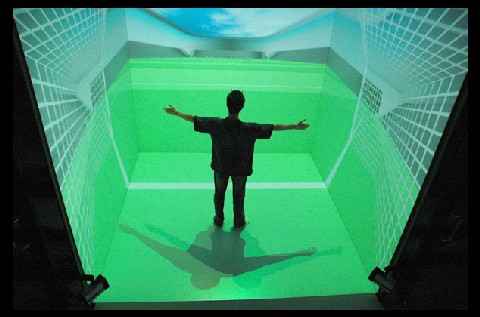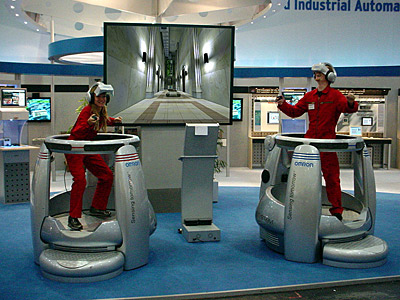The 2015 Immersive Education Summit is going to this coming fall, in Paris! We will be discussing a variation of topics, that include new topics, as well a refresher for the old ones too. Do not miss out on a chance to learn more about the Immersive Education program. To check it out, click on this link! Summit Immersive Education. In this article, we will be talking about Virtual reality, worlds, environments, and more!
Overview:
Virtual reality is a digital
world in which people can interact with one another. The name refers to
exactly what it sounds like – a virtual reality. Although some people
feel more comfortable referring to the reality as an environment to make it
more appealing. This virtual world is a 3D space, designed for
computers. There are different levels of virtual reality, as we have
learned from this class. The 3D online games and environments such as
Second Life and Mesh moon allow us to enter these worlds with a click of
a button. Other worlds are more of an experience, meaning they wear head
gear to listen, talk, and feel more in touch with the game.
In the more recent years,
virtual reality has become an outlet for people. Being able to completely
immerse yourself into a world where nobody knows you feels free. You
interact with other real life people in a world where you can chat, build
things, and interact in environments that maybe you can’t in real life, such as
flying! Users around the world include people who may not be able to walk
in reality, and being able to do that in a virtual world allows an outlet for
that. Same with people who are shy and not great with face-to-face
interactions.
3D virtual realities are not
only for the computer. They are also for phones such as the iPhone and
Android, and also Xbox and Kinect – depending on the application you are
using. In addition to those easily accessible devices, places such as
Disney World and Amusement Parks also use virtual reality. The rides that
allow you sit there and feel the wind blowing through your hair as you sit in a
stationed cart, immersing yourself in the 3D world they created. People
in other departments such as engineering also find good use in virtual
realities. They can create prototypes, and easily alter them without the
expensive cost to re-make another prototype.
Virtual realities can be
enhanced when using headsets that allow each eye to perceive depth, as well as
allow you to literally walk around in the space. Other objects include
joysticks, controller wands, gloves, and treadmills. This allows you to
have a move interactive feel to the virtual world. There are more types
of technology used in virtual realities laying around the common household than
one would think.
Virtual realities are even being
used to help cure pain, and help with addictions such as shopping. People
can go into their virtual worlds and shop as much as they want, without
actually spending real money. The urge to shop is relieved, and their
credit is still intact. Same with allowing people to cure a phantom
limb. Meaning, the pain of having an arm of leg without it actually being
there is something a virtual reality can help with. They can do this by
immersing yourself in an environment where you can see the arm or leg
present. This tricks the mind to believe that it’s still there, even when
it’s not – therefore, the phantom pain goes away.
An example of what a virtual reality is when projected in a small room.
Here is a ride/game at Disney where you are sitting on a still seat, and seeing something else through the goggles.
Another form of the Disney ride above. Here they can run and turn without losing their balance.






No comments:
Post a Comment